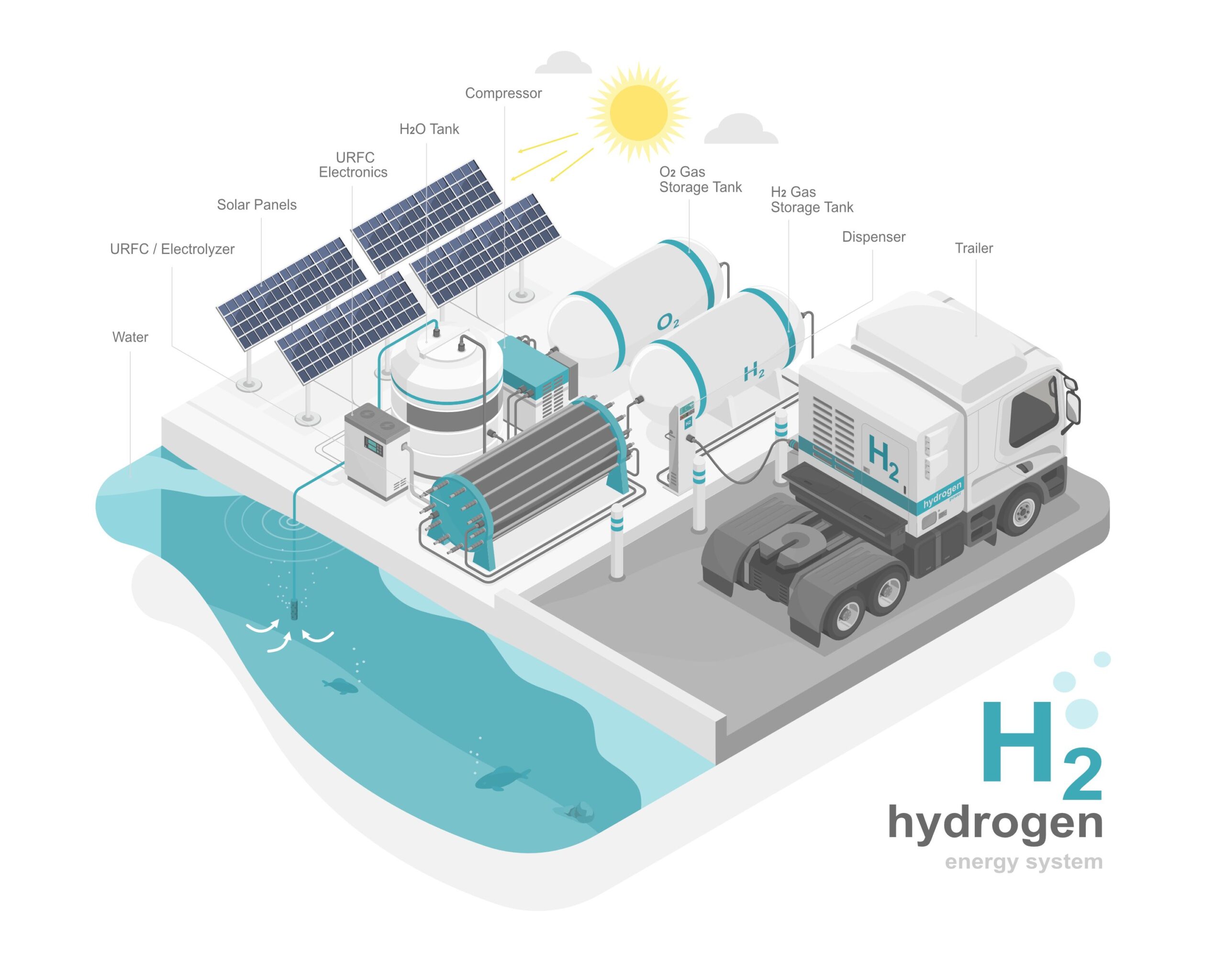Clean Hydrogen: A Game Changer in the Energy Transition
Hydrogen is an abundant and versatile element that has the potential to revolutionize the way we generate and use energy. With its high energy density, zero emissions, and abundance in the atmosphere, hydrogen has the potential to be an incredibly important source of energy in the future.
Hydrogen can be used to produce electricity in fuel cells and for transportation, heating, and cooling uses. Fuel cells combine hydrogen and oxygen to generate electricity, with water and heat as the only byproducts. This makes them a clean and efficient source of energy.
Hydrogen can also be used in vehicles, replacing gasoline, and can be used to power ships and airplanes. In addition to its energy source, hydrogen can also be used to store energy. This can revolutionize how we store and use energy, allowing us to store excess energy generated by renewable sources such as solar and wind and use it when needed. This could reduce our dependence on fossil fuels and provide a cleaner and more reliable energy source. The technology required to fully use hydrogen is still in its infancy, but many promising developments are taking place. Companies such as Toyota and Honda are already producing hydrogen-powered vehicles, and the use of hydrogen in ships and airplanes is being explored. Governments around the world are investing in hydrogen research and development, and several initiatives are being launched to further promote the use of hydrogen.
Challenges in clean hydrogen production
However, hydrogen production presents numerous challenges that must be addressed to make it a viable energy source.
The first challenge is the cost of producing hydrogen. Although the cost of producing hydrogen has decreased, it is still more expensive than other energy sources, such as natural gas and coal. For hydrogen to become a viable energy resource, the cost of producing it must be further reduced. This can be achieved by developing more efficient and profitable hydrogen production technologies and exploring alternative energy sources for hydrogen manufacture, such as solar, wind, and geothermal.
Another challenge is the need for more infrastructure for hydrogen production. Currently, only a few plants are capable of producing hydrogen, and most hydrogen is still produced from fossil fuels. To make hydrogen a viable energy source, the infrastructure must be expanded and improved to support hydrogen production. This includes developing new technologies for hydrogen production and constructing and maintaining pipelines and storage facilities for hydrogen.
Finally, the safety of hydrogen production is another challenge. Hydrogen is a highly flammable and explosive gas that must be handled carefully. Additionally, hydrogen production facilities must be designed and operated to minimize the risk of leaks and accidents. This includes installing proper safety systems to detect and contain leaks and ensuring that all personnel is properly trained to handle hydrogen safely.

Risks in clean hydrogen production
The process of clean hydrogen production requires large amounts of energy to break down water molecules into oxygen and hydrogen. This energy must come from somewhere; in many cases, it comes from burning fossil fuels or nuclear power plants. This presents a risk if the energy used to produce the hydrogen is not clean or renewable. Additionally, there are concerns about the potential for hydrogen leaks from production and storage facilities, which could put nearby populations in danger.
Second, clean hydrogen production is still a relatively new technology and needs the widespread infrastructure of more established energy sources. This has led to delays in the deployment of clean hydrogen production facilities and higher costs associated with building and maintaining them.
Although clean hydrogen production is a renewable energy source, it is still not without environmental risks. The production and storage of hydrogen can release pollutants into the atmosphere, while the burning of hydrogen can release harmful greenhouse gases. Furthermore, hydrogen production requires certain materials, such as platinum and palladium, which must be extracted from the environment, potentially causing environmental damage.
Conclusion
Though clean hydrogen production offers many potential advantages over other energy sources, it is important to be aware of its risks. By understanding the potential risks and working to address them, we can ensure that clean hydrogen production will continue to be a safe and reliable energy source in the future.
And the future of hydrogen looks very promising. As technology advances, it could provide us with a cleaner and more reliable energy source, reducing our dependence on fossil fuels and helping to protect the environment. Hydrogen has the potential to revolutionize the way we generate and use energy and could be key in helping us create a more sustainable future.
